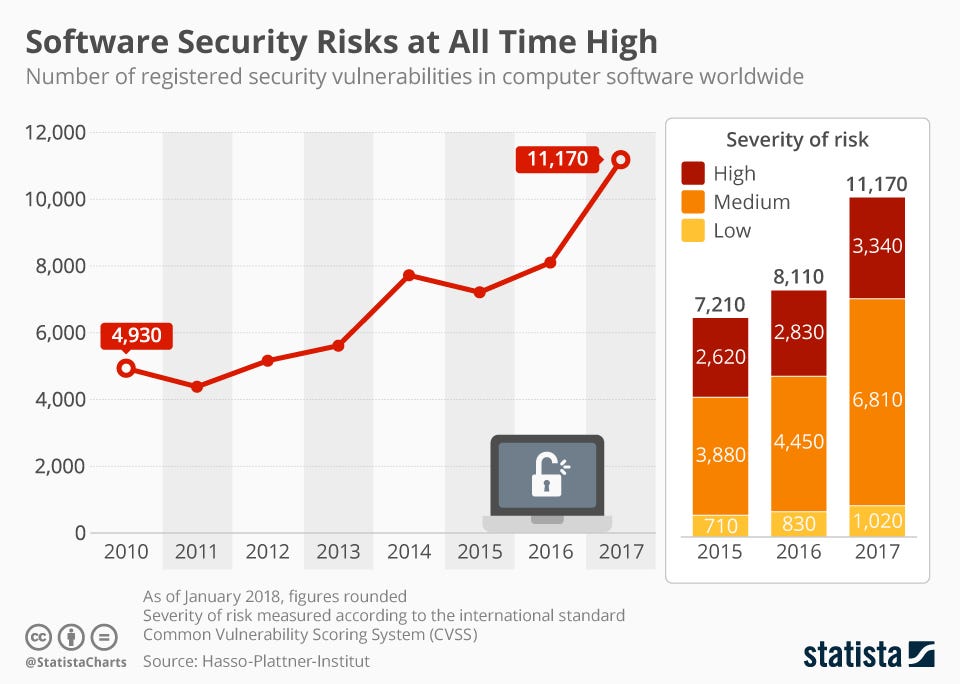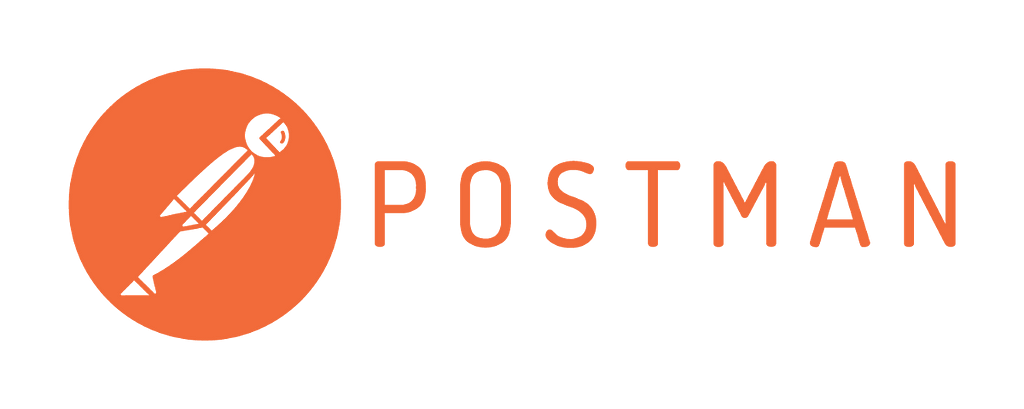Top 15 Software Testing Trends to Watch Out in 2021

There has been a great advancement and growth in the sector of QA testing with the latest trends introducing into IT field services. The introduction of innovative technologies has brought the newest updates in software testing, development, design, and delivery. The high priority of enterprises around the world is cost optimization. In undertaking so, the majority of the IT leaders believe in the incorporation of the newest IT methodologies for their organization. Digital transformation is yet another significant focus point for the sectors and the enterprises that are ranking top on cloud and business analytics.
Even automation practices became the mainstream, paving the way for flawless test practices. Besides, AI and ML seem to reach a new level. Nowadays, Big Data tests mainly include data testing, paving the way for the Internet of Things to become the center point. It is one focal point where all software testing companies should treat with care. Factors such as reliability and quality are being given extra attention that results in the decrease of software app errors, enhancing the security and the app performance.
Modifications in the trends of software testing would also have a significant influence on software tests and QA. The enterprises have increased their budgets for software testing, particularly in the industries of utilities, transportation, and energy. Nowadays, the enterprises are incorporating their testing, earlier in the SDLC (software development life cycle), with test methods such as Agile. This also includes the institution of the T-CoEs to go with the mechanism of the tests with business development building items that are ‘All set for Business.’
Some organizations are also hiring independent testing companies to meet their software testing requirements. In this mode, they incur less cost on QA and tests and don’t even necessitate in-house resources. There are various other vital trends in the Quality Assurance and software-testing arena. Therefore, there is a strong requirement to adapt the most emerging testing trends for all the software enterprises globally, which will assist them in adapting to the needs of the current advanced world. This article will help you to explore some of the top-most Software testing trends to look out for in 2021.
Software Testing: ‘Upcoming Technologies’
The technology scenario in software testing is changing. Latest trends are more appropriate than ever for enterprises and testing experts, as modern users live in the ‘always-on’ manner and necessitate everything accessible. As the no. of apps organizations use grows, and as security and safety-allied costs increase, software test now receives extra attention than ever before, and for a better reason.
As per the World Quality Report, 60% of companies list cost as the highest test environment challenge. The overall test budgets have become more and more inseparable from software engineering resources and budgets. Quality Assurance is now further embedded in the development cycle due in part to the increase of practices such as continuous testing and DevOps. As a direct consequence and effect, more and more companies are beginning to appreciate the worth of QA by seeking software testing and QA consulting companies to aid them with this dedicated work.
While Artificial Intelligence is a useful tool that makes test automation tools and QA actions, in general, more capable, it in no way negates the requirements for skilled testing experts who can develop a lucrative, quality testing solution. Moreover, user testing with real human beings is still a vital element to make sure your product is working, valuable, and user-friendly to your customer.
Top 15 Software Testing Trends in 2021
1. Codeless Automated Testing
The higher adoption of codeless testing tools will be the main software testing trends in 2021 to watch out for. Codeless testing tools are built on sophisticated AI technology plus visual modeling allows the faster formation of test cases that cater to automated tests. Using such tools, IT employees can generate easy test case scenarios with no coding know-how and reduce the time wasted on recurring test cases.
Some of the crucial advantages of codeless testing are effectiveness, ease to review, low learning curve, and saving precious resources. In short, all these reasons combined means that, with codeless test automation, there is no pressing requirement to understand automated testing frameworks or the technology underlying an app to be able to test automatically. Out of the blue, the route to success with automated testing seems within reach. Automated testing tools like Selenium built on this visual approach and also empower even the non-developers. With time, other traits were added, such as RC, IDE, webdriver that added to its significance and value. ‘Selenium IDE’ made persons who did not wish to get indulged in coding. Selenium presently supports varied programming languages such as Python, Java, Ruby, and C# and so on. It allows them to create, manage, and implement automated tests themselves without having to learn how to code.
How does Codeless Automated Testing work?
Codeless automated testing automation is the same as codeless software tests. The basic principle of codeless automated testing is that the test creation shouldn’t necessitate any sort of coding. Now, as there are a plethora of tools accessible in the marketplace that provides codeless test automation, there are varied means of how it works on the Frontend. The most common procedure for them is the alteration of frontend illustration to machine meaningful code in the backend to ultimately make it function.
For instance- In the case of a tool like Testsigma, the test cases are majorly written in an easy language like English, using NLP. These reports are transformed to code (in the backend) for implementation.
Below are a few more popular test automation tools that use codeless testing techniques to allow the automation of test cases:
- TOSCA: This amazing tool by Tricentis uses a model-based test methodology. Previously test creation entails having a model of the app under test, test data, and test scenarios in place. Here too, slight modifications in the app are corrected automatically.
- test.ai: It is one of the most popular automated tools that test your mobile apps for user experience automatically. There is no necessity for coding as well as maintenance here. It runs on AI that studies an app after that automatically generates test cases; execute them to give the outcomes related to user experience.
- Ranorex: This tool offers a package of numerous solutions in one and an amazing trait for the easy recorder for recording and playing.
- Ghost Inspector: Each move in this tool can be created without the necessity of any coding. The tool makes it easy to ensure your website is properly working.
- TestComplete: The specialized tool from smartbear, they make use of keyword-driven tests for automation and no code.
2. ML and Artificial intelligence Adoption for Test Automation
The rising demand for Artificial Intelligence continues to grow due to the growing number of apps we use in our linked world. Current expense in AI is projected to be $6–7 billion in North America single-handedly. By 2025, AI global investment, in general, is going to hit reach $200 billion.
Some Artificial Intelligence (AI) Statistics at a Glance!
- Nearly 64.8 percent of firms have invested over USD 50 million in Artificial Intelligence (AI) and Big Data initiatives in the year 2020, up from 39.7 percent in 2018. — Forbes
- In 2020, 37.8% of industry-leading companies generated a data-driven company by leveraging Artificial Intelligence (AI) and big data. — Statista
- Computational resources used in Artificial Intelligence will grow 5x from the year 2018 to 2023. It will make Artificial Intelligence the top-most group of workloads impelling infrastructure assessments and decisions. — Gartner
The most popular AI-based automated testing tools are as follows:
- Appvance: This tool uses AI for generating test cases based on user behavior. The portfolio of tests systematically covers what genuine users do on production systems. Therefore, this makes it 100% customer-centric.
- Testim.io: This tool uses Machine Learning for the authoring, implementation, and continuity of test automation. It emphasizes user interface testing, comprehensive testing, and functional testing.
- Test.ai: It is one of the popular mobile test automation tools that use Artificial Intelligence to execute regression tests. This tool is beneficial when it comes to obtaining the performance metrics on your app and is a better monitoring tool than a functional test tool.
- Functionize: It used ML for functional tests and is similar to different test tools available in the market regarding its capacities like being able to run tests rapidly (without scripts), carries out multiple tests in a few mins, and executes deep analysis.
- TestCraft: It is an AI-based automated testing platform for continuous testing and regression testing that functions on top of Selenium. TestCraft is also used for monitoring web apps. The role of AI-powered technology is to eradicate cost and maintenance time by overcoming modifications in the app automatically.
- Applitools: It is one of the most popular app visual management and AI-powered visual User Interface monitoring and testing software. It gives a comprehensive software test platform based on Visual AI and can be used by experts in Digital Transformation, test automation, engineering, DevOps, and manual QA teams.
- Sauce Labs: It is also one of the best cloud-based automated testing tools that leverage AI and ML. This amazing tool supports a comprehensive list of OSs and browsers, mobile simulators and emulators and mobile devices, and at the pace that its users require to test their applications.
3. Test Automation in Agile Teams
Agile testing and agile development are rapidly increasing in popularity, and intelligent Quality Assurance or test teams keep pace with present growing software trends. Agile tests tools differ from project mgmt tools to test automation tools. Any Agile project with no test automation is effectively a waterfall project in phases. Automated testing is considered a crucial activity for agile methodologies being the major drive to accelerate the QA procedure. As per the latest report of MarketsAndMarkets.com, ‘the automated testing worldwide market size is expected to hit from $12.6 Billion in 2019 to $28.8 Billion by 2024 at 18.0% of a CAGR (Compound Annual Growth Rate) in this estimated period.’
4. Increase Demand for Big Data Testing
Companies across industries continue to cope with immense data volume and different data forms. The mining of any amount of unstructured or structured data defined as big data requires an end to end testing. Big data tests assist in making enhanced decisions with correct data validations and improving business strategizing and market targeting with well-versed decisions drawn from this big data analysis.
According to MarketsAndMarkets, the big data market global value is estimated because of the increased IoT devices usages in enterprises and the higher initiatives by the governments to boost the use of digital technology. Higher dependency on data amid every vertical requires successful big data testing to guarantee integrity, accuracy, reliability, and quality of data necessary for making informed decisions by all enterprises. Particularly, big data tests aid in making data-driven decisions about several services and products, which are captured and scrutinized to deliver important insights to enterprises.
5. IoT Testing to Boost Digitally Connected Smart Devices
The number of interconnected gadgets reached 20 billion by 2020 compared to the data of 6.4 billion during 2016. These stats represent the enormous expansion and the requirement for an effective IoT test strategy. This IoT testing counts the test of communication protocols, operating systems, together with hardware and software of the IoT devices. There is a possibility of risks seen in the hardware of several IoT products, which is vulnerable to several threats that require to be efficiently tested. Also, the software is in-built into the IoT devices. Therefore, it is essential to get all the IoT gadgets and security tested to avoid vulnerabilities and threats. The majority of companies have already started determining the necessity for an effective IoT test strategy to allow well-connected and efficient smart devices required for end-users.
What does Market Stat say?
The IoT Testing market was previously valued at $ 781.96 billion in the year 2019 and is projected to hit $3624.23 billion by the year 2025, at a Compound Annual Growth Rate of 32.34 percent over the prediction period 2020–2025. The usage of IoT tests using advanced and leading-edge technologies has led to the rising use of distinct kinds of test tools for several purposes, and the market is projected to grow at a rapid rate during the forecast period.
6. Rising Adoption of Agile and DevOps
Companies have embraced DevOps as a response to the demand for accuracy and speed and Agile to respond to quickly changing needs. DevOps comprises practices, processes, tools, and rules that assist in integrating operation and development actions to minimize the time from developing to operations. DevOps has to turn out to be an extensively accepted solution for enterprises that are looking at means to shorten the SDLC (software development lifecycles) from development to operation and delivery. The increasing adoption of both DevOps and Agile helps the QA experts to develop and send quality software rapidly, which in turn is also referred to as ‘Quality of Speed.’ Such adoption has gained higher interest over the past 5 yrs and continues to strengthen in the coming years.
7. Switch to Performance Engineering
Attaining higher performance was a considerable job earlier whilst developing the software. You require working on several elements, such as business value, usability, simple configuration, and security. The various platforms on which the app is made obtainable describe the captured user experience as well as market size.
User experience plays one of the significant roles during short development cycles, frequent releases, as well as changing market needs. In response to this trend, software developers started prioritizing a customer-focused approach at each SDLC phase to reduce performance glitches and bottlenecks at the earlier stage of the product’s lifecycle. Accordingly, performance test goals have transformed into scrutinizing the inadequate performance of the system and knowing where it is rooted in the software development procedure. Hence, in response to that, performance engineering is developed as a replacement for performance tests for building significant performance metrics from the very first design.
A few key differences between performance engineering and performance testing:
• First and foremost, performance testing is a quality check of the app’s responsiveness as well as load handling. It establishes how perfectly the system will tolerate a production load and foresees the glitches that could turn up during heavy load situations. However, Performance engineering seeks out for designing the app from the beginning with performance metrics such as turnaround time, quality, productivity, etc., in mind and facilitates the early detection of problems in development.
• Second, the performance test is a Quality Assurance procedure that generally takes place when a software development round is finished. Performance engineering, on the flip side, is a nonstop process that is entrenched in every stage of the software development cycle, starting from product design to development, and then to the end-customer experience.
• Lastly, the performance test is conducted by the software testing team, while performance engineering involves teams of Quality Assurance and RND.
8. Blockchain Testing
Blockchain technology is necessary for businesses like cryptocurrency, automotive, and finance. It makes a decentralized network distinct from a central system utilized by traditional banks for managing banking as well as financial operations. So, undeniably, blockchain technology has transformed the method enterprises are dealing with digital currencies like bitcoin. These blockchain apps aren’t just constrained to the financial world, and their smart contracts are being employed in each business field, from the governmental services to the energy vertical. The extensive range of blockchain apps, however, brings in several challenges to blockchain debugging. Blockchain testing is an efficient, specialized, and next-gen testing solution to debug the code to deliver productive blockchain apps.
As per Marketsandmarkets, the international blockchain market size is projected to hit $39.7 billion by the year 2025 from $3.0 billion in 2020. By 2022, it is anticipated that a blend of blockchain technology and IoT devices through smart contracts will allow micro-transaction between the two different parties, which will be an upcoming trend. Moreover, the Australian Securities Exchange is also planning to employ a new blockchain-centric system for managing the Australian financial market by the 2020 year-end. Besides this, a current PWC report reveals that 77% of financial institutions are likely to accept blockchain technology as a section of an in-production procedure or system by the year 2020. Such stats decipher the increasing scope of blockchain technology and the requirement for blockchain tests.
Blockchain Testing: Core Testing Types
Some of the key testing types that must be run include performance, functional, node testing, API, and other specialized testing.
• Performance testing: Performance testing determines performance bottlenecks, proposes the techniques of fine-tuning the system, and reassesses if the app is ready to launch in the market.
• Functional testing: Functional test is a holistic procedure that estimates the work of several functional portions of the blockchain (for instance- smart contracts).
• Node test: Every heterogeneous node on the network should be independently and perfectly tested to guarantee smooth cooperation.
• Application Programming Interface tests: API testing addresses the interface between apps in the blockchain arena. It examines to make certain that Application Programming Interface replies and requests are handled and formatted appropriately.
Some of the Most Popular Blockchain testing tools:
- Ethereum Tester: This is one of the most utilized platforms and open-source test library available as a Github repo. Ethereum Tester’s installation is pretty simple, with a manageable Application Programming Interface support for several testing requirements. It is reliable for Web3 Integration, API, smart contracts, backend, and various other blockchain testing.
- Ganache: Earlier named as TestRPC tool, it is exclusively built for testing Ethereum contracts locally. It generates a simulated blockchain that enables any person to use several accounts to test.
- Populus: This framework developed around the py.test framework has the testing functionality of Ethereum entrenched in the shape of a series of features for testing contract deployment.
- BitcoinJ: This is also a famous tool and a Java-based framework built for Bitcoin-based applications that allow you to interact with the actual BTC network and several test activities.
- Embark: Embark is a test framework that concentrates on developing dApps (decentralized apps) that run on several nodes or systems. This amazing framework has integrations with IPFS, Ethereum blockchain, and decentralized communication platforms like Orbit and Whisper.
- Truffle: This incredible tool is a commonly preferred name for Ethereum developers. It brings in the best testing features like automated contract tests. It holds capacities beyond merely testing functionality within the Blockchain app.
- Exonum Testkit: Tests the operation of the whole service is the strong point of Exonum Testkit. It enables anyone to test the Application Programming Interface and transaction execution in the organized system, i.e., without the association of the consensus algorithm and network operation.
9. Cybersecurity and Risk Compliance
In 2020, cybersecurity testing has been turned out to be a growing trend in Quality Assurance and software tests. The report summarizes some key objectives goals that explain its inclusion as an individual topic: growing awareness of the importance of security among all industries, increasing the product and software security and implementing security checks prior to the Software Development Life Cycle.
As per the ‘Better Security and Business Outcomes with Security Performance Management’ study by BitSight, over 82% of stakeholders accepted that users perceive security as growing essential in making decisions for their enterprises. The damage connected with cybercrime is projected to hit $6 trillion annually by 2021, according to Cybersecurity Ventures.
In the year 2021, security practices are going to come more into play, and these are some reasons why:
• Regular pen test aids to build the enterprise’s trust with customers, 3rd-parties, and partners.
• Security tests offer you a comprehensive understanding of your enterprises’ weak points before hackers/ attackers do and assist in detecting areas susceptible to security or cyber threats.
• Cybersecurity tests guarantee that if any downtime happens, it is not as expensive and damaging as if you were not prepared.
Cybersecurity tests protect not just transactions (be it money or data), yet also secure their end-users. As cyber risks can easily happen at any moment, in any shape, cybersecurity testing will continue to be a buzz in the following year. Here are some crucial reasons why:
• Cybersecurity testing provides an in-depth knowledge of your enterprises’ weak spots before the hackers do.
• Penetration test is cost-effective: data breaches gradually more aggravate the already vulnerable position enterprises find themselves in the mid of the 2020 epidemic.
• Security test assists to spot parts susceptible to cyber thefts or attacks.
• Regular penetration testing contribute to enterprises’ great reputations, and aids win immense trust between enterprises and third parties, their partners, and customers partners.
• Cybersecurity tests guarantee that if downtime happens, it is as costly and destructive as if you were not ready.
10. Significance of QAOps
QAOps is a better practice to bring QAs, operations, and developers’ altogether. Testing actions, together with CI/CD pipelines and QA engineers working parallel with the development team, are the two critical holders of QAOps.
Including QA in development and operations.
To achieve great quality and quick delivery, all testing and QA activities must be executed in the CI/CD pipeline. One of the better ways to integrate Quality Assurance in operations and development is for developers to commence by writing test cases whilst product designers and operation engineers identify UX/UI anomalies alongside the testing team. By implementing this, the developer and QA teams work mutually and gain a good understanding of the Quality Assurance process. This teamwork will then help to make the procedure of testing and development further efficient.
In a nutshell, QAOps is a rising trend that enables the automation of procedures between IT, software development, and Quality Assurance to deliver software rapidly and with superior quality. Hence, gradually more organizations are inclining towards DevOps, and this places QAOps on the go in 2021.
11. Incorporating Manual and Automation Testing
Automated thorough manual test effort is the perfect strategy to reveal the capacities of any skilled QA team. Combining these two efforts can increase productivity, save time with enhanced quality. There are definite aspects that automated tests can’t deal with. Currently, there has been a hike in automation and the requirement for automated QA engineers. With automation, the speed and efficiency of software testing augment considerably, but it can’t cover various aspects like design, user experience, and usability. The balance for both automated and manual testing in a software development procedure is the QA test’s future.
Why should we merge manual with automation tests?
The faster the QA team can detect the error, the less will be the time required to mitigate them, and therefore spending money on test resources is more valuable than spending it on errors after their release. It also illustrates that, all through testing, every technique, branch, situation, route, and choice has been well-tested so that glitches are discovered at the primary phase. If the bug is identified at the beginning, the expense gets minimized to fix it.
The code scope is managed at some stage in the test coverage; moreover, it scrutinizes the quality of every app’s function and minimizes the gaps amid demands as well as test instances. As the contribution of manual and automation tests is usually fixed by the app’s specifications, both methods should be used randomly to cover the code utmost.
Strength of Automated and Manual Testing
Automation testing has the benefit of consistency and speed; however, it lacks a user standpoint. This is wherein the manual test is better used, so it picks up where test automation leaves off. Both the techniques might be used to cover up distinct sections of the same traits or for coverage of entirely separate features. But, automation tests can only work and the scripts written for it, whereas manual tests are only as perfect as the QA engineers. Incorporating both these testing can result in a harmonious balance of usability, functionality, speed, minimized bugs, and an overall better user experience.
12. API and Service Test Automation
As per Gartner, ‘by the year 2021, at least 1/3rd of organizations will have deployed a multitudinous-experience development platform for supporting web, conversational, mobile, and augmented reality development.’ In the past decade, APIs haven’t just fuelled a new Digital Economy, however, also created a wings race of innovation that is forcing several enterprises to rethink how they build as well as bring new apps.
With the enhancement of microservice architecture on the web as well as software development, the usage of application programming interfaces (APIs) is mounting every day. APIs are being utilized in almost every component. Even the Client-Server development is at the peak, and the QA team must confirm these APIs are communicating perfectly with each other, plus functioning separately. To keep this procedure highly effective, automated testing on the Application Programming Interface and service level will rise as we move toward 2021.
13. Testing Centers for Quality
Enterprises face enormous challenges as they try to manage app quality while responding to additional demands from the business, counting inconsistent testing procedures across locations, geographies, and test groups, under-executing testing and QA functions, and sub-optimal consumption of resources, infrastructure, and tools. In return, several big giant companies are looking to Centers for Quality models with devoted teams determined on standardizing deliverable implementation models to make sure the quality of significant business systems and processes. Testing Center of Quality is a model for a centralized test platform that offers standardized test procedures and optimum use of resources for quality and test reasons.
The testing center for Quality has test teams devoted to building up a reusable tests framework and standards for enterprises to follow whilst developing. In the long term, this aid in building superior-quality software and enhances the overall workflow of the software development procedure. Executing these centers will also reduce test time without sacrificing the quality of the product’s performance, usability, and functionality. It will also offer effective automated tests and make flexible standards in QA practices to be executed in upcoming projects to come.
Some of the other rewards of Testing Centers for Quality models being in are more agility to Quality Assurance and helps to set up a continuous improvement procedure driven by metrics.
14. Infrastructure as Code (IaC)
Cloud-based solutions are being utilized by several enterprises, mainly IT firms, in enormous numbers, to attain cost-effectiveness, scalability, and flexibility. The increasing use of cloud and virtualization has modified the way servers were used. It has simplified the bottleneck that was a problem in the past to allocate servers and configure them. The leading-edge infrastructure management technology has modernized the procedure of managing the architecture. The use of varied tools such as Terraform, Kubernetes, Docker, etc., is on the hit and will continue to dominate in 2021.
As the name proposed, infrastructure as code (IaC) is mainly the concept to manage your operations environment in a similar method, you do apps or other code for normal release. In spite of manually making configuration modifications or making use of one-off scripts to make infrastructure changes, the operations infrastructure is controlled instead using the similar structures and rules that govern code development chiefly, while new server instances are turned up. It means that the core DevOps best practices such as virtualized tests, continuous monitoring, and version control are applied to the underlying code that governs the design and management of your infrastructure. In simple words, the infrastructure is treated the exact similar way that any other code would be.
The use of advanced coding systems such as Puppet or Ansible is designed to make infrastructure as code environments available to any person with fundamental knowledge of modern coding structures and techniques.
Four best practices of IaC:
- Apply test to infrastructure in the form of integration testing, functional testing, and unit testing.
- Manage infrastructure through source control, therefore giving a thorough audit trail for alterations.
- Allow incorporation around infrastructure configuration and arrangement, particularly between dev and ops.
- Evade written documentation, as the code itself will document the machine‘s state. This is critically powerful as it means, for the first time, that documentation concerning infrastructure is always updated.
IaC Makes DevOps Possible
In easy words terms, Infrastructure as code is a framework that takes proven coding methods, practices and extends them to your infrastructure straight, efficiently blurring the line between what is an app and what is the setting. In a nutshell, this is the similar thing DevOps is doing with the personnel in charge of these two worlds, melding operations and developers staff into a single unit with a portmanteau of a name.
Infrastructure as Code Benefits
• Consistency
Manual procedures result in errors, period. Humans are not always perfect. Communication is tough, and we are generally pretty bad at it. Even sometimes, manual infrastructure management would cause discrepancies, regardless of how hard we try. However, Infrastructure as Code solves that issue by having the configuration files themselves be the only source of truth. In this way, one guarantees similar configurations will be deployed again and again, with zero discrepancies.
• Speed
The main benefit Infrastructure as code offers is speed. IaC allows you to rapidly set up your entire infrastructure simply by running a script. One could easily do that for each environment, from development to production, exceeding all the way through staging, Quality Assurance, and more. Infrastructure as Code can make the whole software development lifecycle highly effective.
• Accountability
This one is easy and fast. As you can version Infrastructure as code configuration files similar to any source code file, you have complete traceability of the modifications every configuration suffered. No more presumption games anywhere.
• Lower Cost
The major benefit of Infrastructure as Code is, undoubtedly, lowering the infrastructure management expense. By employing cloud along with Infrastructure as Code (IaC), one could dramatically reduce the expense.
• Effectiveness During the Entire Software Development Cycle
By employing IaC, you can set up your infrastructure architectures in several phases. That makes the entire software development life cycle more competent, increasing the team’s efficiency to new heights.
15. Chatbot Tests
With the coronavirus epidemic, chatbots have become well-liked within the healthcare industry by offering remote support to patients plus several other sectors. Due to global lockdown for months in a row, several companies implemented chatbots. Even chatbots provided 24×7 support to millions of retail stores, financial organizations, brands, etc. ChatBots will continue to conquer the globe as a part of RAP (robotic process automation). Bots allow reducing costs on support while giving a better user experience. The smooth functioning of chatbot necessitates careful testing.
Three Most Popular Chatbot Testing Tools to Consider:
1. Chatbottest
The open-source guide provides around 120 questions to assess the user experience that your chatbot brings. It generally operates at 3 levels:
• expected scenarios.
• possible chatbot test scenarios.
• nearly impossible scenarios.
2. Dimon
The good thing about this chatbot test tool is that it incorporates seamlessly with key platforms such as Slack, Telegram, Facebook Messenger, and WeChat. Make use of it to discover any errors in the conversational flow of your bot, in the user experience that it offers.
3. Botanalytics
Right from conversational flow to usability to the delivered user experience, this customized service allows you to test each main aspect of your chatbot.
What Are the Top Software Testing Tools Available at This Time?
As per reviews from software test teams, the testing community seeks end-to-end, cross-platform testing solutions and robust test automation capacities. Here are some of them:
- Katalon Studio: It is an automated tool for mobile, Web, API, and desktop app testing.
- Selenium: It is a household name in automated testing for several years.
- SoapUI: It is a headless functional test tool particularly designed for API tests.
- UFT One: A paid tool and one of the best tool options for mobile, web, desktop, and RPA app tests.
- TestComplete: It is an Artificial Intelligence-powered test automation tool for mobile, desktop, and web testing.
- IBM Rational Functional Tester: This is a data-driven test platform for both regression as well as functional tests.
Other notably powerful and robust tools include Ranorex, Apache JMeter, Postman, Cucumber, Tricentis Tosca, Appium, Telerik Test Studio, and Worksoft. All are valuable to check out if nothing of the choices in the list above seems perfect for anyone.
Future Forecast of Software Testing
In order to leverage a product-market fit, several companies pay their complete attention to quality and depend on professionals working for the software testing company. The solutions provided by such companies help you find resources and skilled software testers or QA engineers that are mature in the matter of accomplishment and applied technologies. It is estimated that there will be an expansion in independent testing in the upcoming decades. Concentrating on security and automated tests could also be a wise decision. With a transformative influence on your business in 2021, it could be better to refocus Quality Assurance on user experience and build it on the DevOps and agile best practices. In order to move products to market rapidly, consulting independent software testing companies would be better to address concerns professionally.
Conclusion
These are the most recent trends in testing that are exceedingly useful for organizations and businesses. No matter whether you are a testing company or a QA professional, you need to continually brush up with these emerging software testing trends to stay ahead in the competitive and ever-changing industry.






















